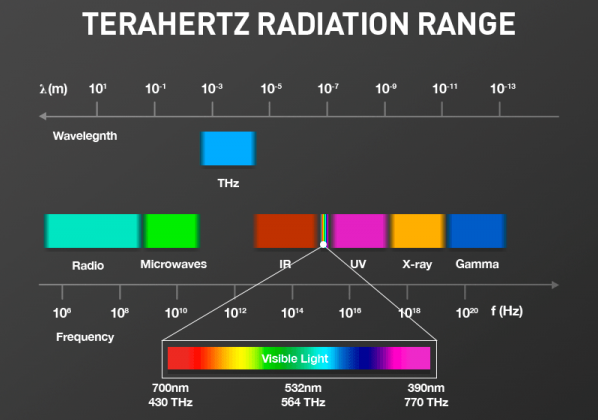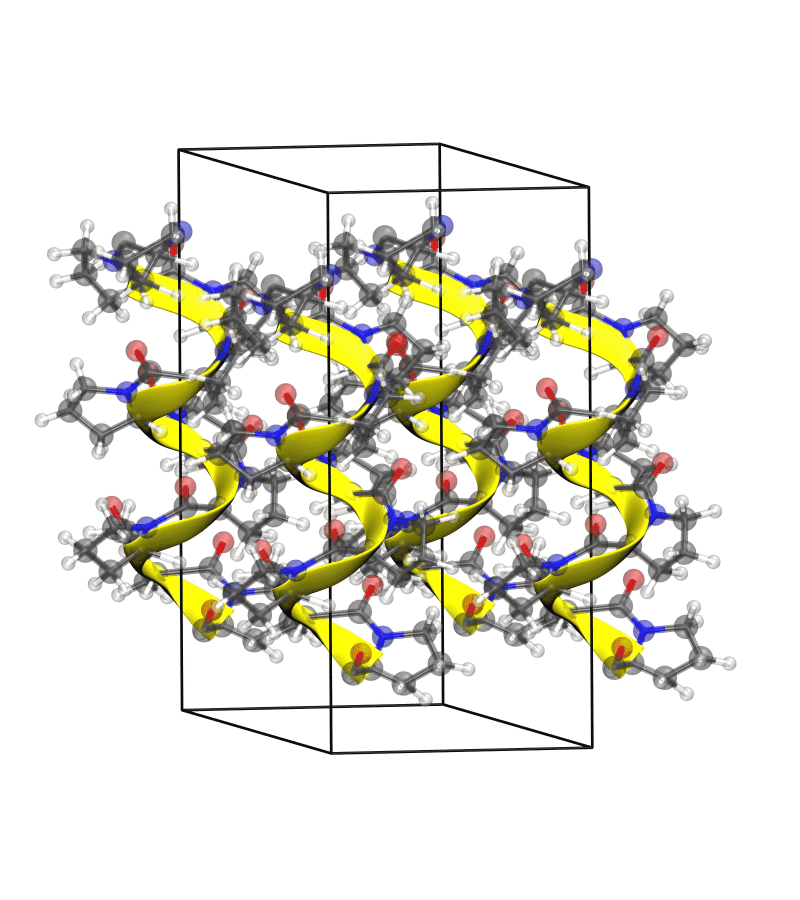Terahertz radiation, sometimes referred to as far-infrared or far-IR, generally falls between the microwave and infrared regions of the electromagnetic spectrum. Terahertz radiation has frequencies on the order of 1012 Hertz (10-300 cm-1), with corresponding wavelengths of about 1 millimeter to 30 micrometers. Traditionally, this part of the spectrum has been referred to as the ‘terahertz gap’ due to difficulties in generating and detecting the terahertz radiation, however over the past ten years great strides have brought terahertz technologies into the mainstream, and this title is a bit of a misnomer now!

Terahertz radiation is a powerful probe of countless physical phenomena, with many applications spanning a huge discipline range. In the Ruggiero Group, we use terahertz radiation primarily in a spectroscopic capacity, to investigate the vibrational motions of atoms and molecules within materials. That’s not to say we are limited to this, in fact we have used terahertz radiation to do all sorts of cool things over the years – like image pharmaceutical tablets or predict the structures of materials – but by far our largest focus area is terahertz time-domain spectroscopy. In that sense, we are developing new methods for generating and detecting terahertz radiation, with the focus of applying our methods to advanced materials.
Terahertz Motions in Materials 
The motions that terahertz vibrations can excite are exciting in that they are often large-scale motions of entire molecules within a solid. This is in contrast to traditional vibrational spectroscopy, like Fourier transform infrared (FTIR) spectroscopy, where the vibrations are typically limited to covalent bond vibrations. The collective motions excited with terahertz radiation usually correspond to particular pathways – pathways that correspond to important mechanisms that drive the proper functioning of advanced materials.
For example, take the terahertz vibration of a biopolymer, polyproline. This motion is very similar to traditional ‘spring-like’ motions used to understand the mechanical response of materials using Hooke’s Law. However, unlike traditional mechanical measurements, which require physically pushing and pulling on a material, we are able to understand the elastic response of this biomolecule without ever coming in physical contact with it. How cool is that?!
We play with lots of different types of advanced materials, and some examples of current systems we are playing with can be found on this page.
Ruggiero, M. T., Sibik, J., Orlando, R., Zeitler, J. A., Korter, T. M. Angewandte Chemie, 55(24), 6877-6881 (2016), Featured on Journal Front Cover. Featured in C&E News, Terahertz Radiation Probes Polymers, 94, 30-31 (2016).